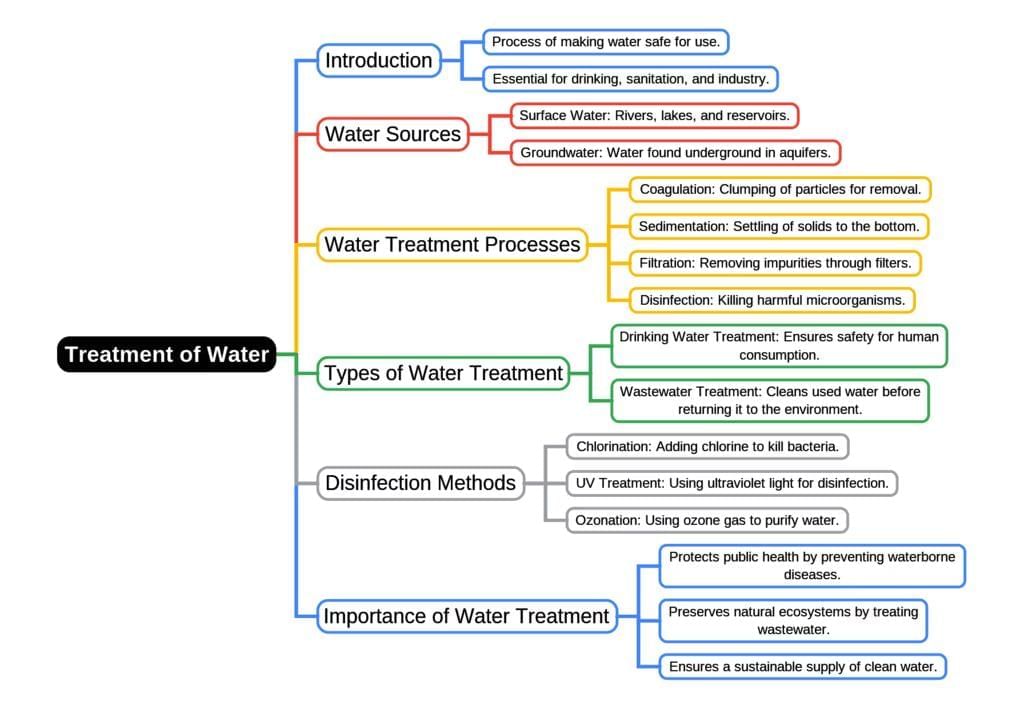Civil Engineering (CE) Exam > Civil Engineering (CE) Notes > Environmental Engineering > Mind Map: Treatment of Water
Mind Map: Treatment of Water | Environmental Engineering - Civil Engineering (CE) PDF Download

The document Mind Map: Treatment of Water | Environmental Engineering - Civil Engineering (CE) is a part of the Civil Engineering (CE) Course Environmental Engineering.
All you need of Civil Engineering (CE) at this link: Civil Engineering (CE)
|
14 videos|142 docs|98 tests
|
FAQs on Mind Map: Treatment of Water - Environmental Engineering - Civil Engineering (CE)
| 1. What are the main methods of water treatment in civil engineering? |  |
Ans. The main methods of water treatment in civil engineering include filtration, sedimentation, coagulation and flocculation, disinfection, and reverse osmosis. Filtration removes particles from water, while sedimentation allows heavier particles to settle. Coagulation and flocculation help in aggregating smaller particles into larger ones for easier removal. Disinfection kills pathogens using chemicals or UV light, and reverse osmosis is a process that removes impurities by pushing water through a semi-permeable membrane.
| 2. Why is water treatment important in civil engineering? |  |
Ans. Water treatment is crucial in civil engineering to ensure the safety and quality of water supplied to communities. It helps remove contaminants that can cause health issues and environmental damage. Properly treated water also meets regulatory standards and improves the overall sustainability of water resources, supporting public health and ecosystem integrity.
| 3. What are the challenges faced in water treatment processes? |  |
Ans. Challenges in water treatment processes include the presence of emerging contaminants, fluctuating water quality due to seasonal changes, the need for advanced technologies to remove specific pollutants, and ensuring cost-effectiveness in treatment operations. Additionally, maintaining infrastructure and adapting to climate change effects poses significant challenges.
| 4. How does the process of disinfection work in water treatment? |  |
Ans. The disinfection process in water treatment involves using chemicals such as chlorine, ozone, or ultraviolet (UV) light to eliminate harmful microorganisms. Chlorine is added to the water to kill bacteria and viruses, while UV light destroys the DNA of pathogens, rendering them inactive. It's essential to monitor and optimize disinfection to ensure effective microbial control without producing harmful byproducts.
| 5. What role do civil engineers play in water treatment systems? |  |
Ans. Civil engineers play a vital role in designing, constructing, and maintaining water treatment systems. They are responsible for selecting appropriate technologies, ensuring compliance with environmental regulations, and optimizing processes for efficiency and effectiveness. Civil engineers also work on infrastructure projects that support water distribution and wastewater management, contributing to the overall sustainability of water resources.
Related Searches















